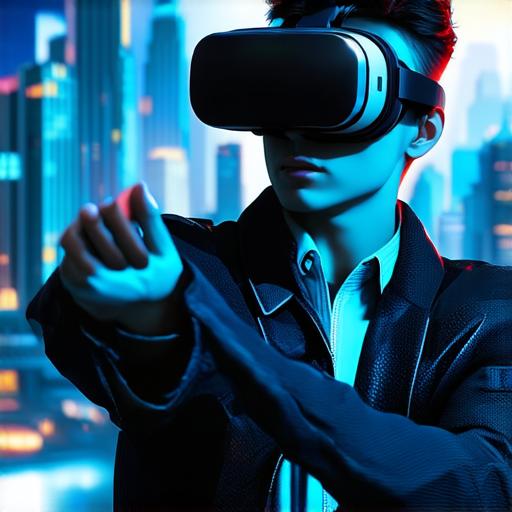
How do you make use of virtual reality?
Virtual Reality (VR) is a rapidly growing field that has already transformed several industries such as gaming, entertainment, healthcare, and education. The immersive experiences created through virtual reality can lead to increased engagement and loyalty among users. In this article, we will delve deeper into the benefits of VR for developers, case studies that showcase its transformative power, how to create an immersive experience with virtual reality, tips for developers looking to get started, and conclude by discussing the future of VR technology.
The Benefits of Virtual Reality for Developers:
Virtual Reality provides a unique opportunity for developers to create experiences that were previously impossible. With VR, users can enter a digital world and interact with it in a way that feels natural. This creates an emotional connection between the user and the product, which can lead to increased engagement and loyalty. Additionally, VR allows for more creative freedom for developers, as they can design entire worlds from scratch.
One example of how virtual reality is changing the game for developers is in the gaming industry. Virtual reality games like Beat Saber and Half-Life: Alyx have become critically acclaimed for their immersive experiences. These games use VR to create a sense of presence that was previously impossible, allowing players to feel like they are truly inside the game world. For instance, Beat Saber uses virtual reality to create an immersive music experience where users can dance and play music in a virtual environment. This creates a unique gaming experience that is hard to replicate in traditional games.
Another example is in the healthcare industry. Virtual reality has been used to treat conditions like PTSD, anxiety, and depression. By simulating real-world scenarios, therapists can help patients confront their fears in a safe and controlled environment. This has led to significant improvements in patient outcomes. For instance, virtual reality therapy has been found to be effective in reducing symptoms of PTSD in veterans.
Creating an Immersive Experience with Virtual Reality:
Creating an immersive experience with virtual reality requires careful planning and execution. Developers need to consider factors like user interface, movement tracking, and sound design to create a seamless experience. Additionally, developers need to think about how the user will interact with the virtual world and what kind of feedback they will receive.
One important aspect of creating an immersive experience is designing for motion sickness. Motion sickness can be a major issue in VR experiences, so developers need to take steps to minimize it. This can include using smooth camera movement, adjusting the field of view, and providing clear visual cues. For instance, in virtual reality therapy for PTSD, developers need to ensure that the virtual environment is designed to avoid triggering symptoms such as motion sickness.
Tips for Developers:

Here are some tips for developers looking to create immersive experiences with virtual reality:
- Start with a clear vision: Before you start building your VR experience, you need to have a clear idea of what you want to achieve. This will help guide your development process and ensure that your final product meets your goals. For instance, when developing a virtual reality game, it is essential to have a clear understanding of the gameplay mechanics and how they translate to a virtual environment.
- Use real-world inspiration: Virtual reality experiences should feel as realistic as possible. Draw inspiration from the real world and use it to create a sense of presence in your users. For instance, when developing a virtual reality therapy program, it is essential to draw inspiration from real-world scenarios that may trigger anxiety or PTSD symptoms.
- Test, test, test: Virtual reality is still a relatively new technology, so it’s important to test your experience thoroughly before releasing it to the public. This will help you identify and fix any issues that could negatively impact the user experience. For instance, in virtual reality therapy for PTSD, it is crucial to test the program with veterans to ensure that it is effective and does not trigger any negative symptoms.
- Keep it simple: While virtual reality can be incredibly powerful, it’s important to keep things simple. Too much information or too many options can overwhelm users and detract from the immersive experience. For instance, in virtual reality education programs, it is essential to ensure that the content is presented in a clear and concise manner.
- Stay up-to-date: Virtual reality technology is constantly evolving, so it’s important for developers to stay up-to-date with the latest advancements. This will help them create experiences that are both innovative and effective. For instance, keeping track of new developments in VR hardware and software can help developers create experiences that are more immersive and engaging.
Summary:
Virtual Reality has the potential to revolutionize industries and change the way we interact with digital products. By understanding how virtual reality works and how to create immersive experiences, developers can take advantage of this technology and create products that engage and delight their users. With careful planning and execution, virtual reality can be a powerful tool for driving engagement and creating memorable experiences. As technology continues to advance, the possibilities for VR are almost limitless. For instance, we may see virtual reality being used in fields like architecture, interior design, and even space exploration in the future.


